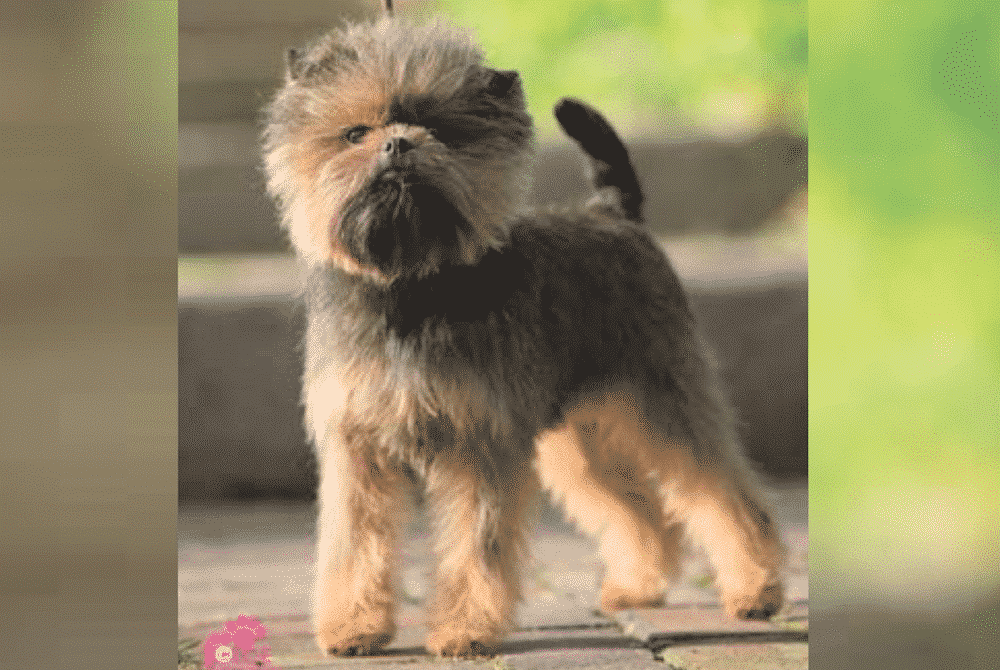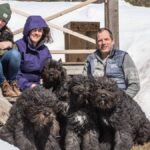How to judge Affenpinscher ? From the January 2021 issue of ShowSight. Click to subscribe. Photo from the article “Monkey Dogs In America” by Barry Leece & Cameron Riegel. Showsight September 2017 Issue.
Learning how to judge Affenpinscher can be difficult for several reasons. As a rare breed, with no dogs exhibited in many areas of the US, people need to travel in order to be exposed to any good specimens of the breed. Additionally, there are few long-term breeders to use as mentors or large kennels with many dogs to observe. “Affens” have only one specialty weekend per year, with entries of 30 to 50 dogs. For these reasons it is imperative to make an effort to find, observe, and examine Affens when the opportunity presents itself. Judges’ Education for the Affenpinscher Club of America tries to participate in seminars put on throughout the year in various parts of the country. We also have an excellent Illustrated Standard available.
Addressing the major characteristics that make the breed so endearing to its owners and so special to judge: “This is a small, sturdy, harsh coated, shaggy looking little dog who is comical, inquisitive and alert.” Taken from the ACA Illustrated Standard introduction, this describes what you need to see as they enter the ring. We do not want heavy, coarse or big dogs. Affens are square and up on leg, not long in body or low on leg, which are “drags on the breed.”
Shape, proportions, and angles are specifically different from other Toy dogs. They have a “short vertical neck” and moderate angulation front and rear. This creates correct movement, described as being jaunty and light, but without excessive reach and drive. The Affen needs to pounce, jump, and twist to capture a rodent, not chase it down. When in the ring, they should not be raced, but rather be moved at a speed to show off agility and lightness.
Affens are very determined and alert, but also comical. They will walk and dance on their hind legs to attract attention. When moving, they may remind you of Charlie Chaplin as the “Little Tramp” in the movies; comic in appearance, but serious in purpose. Their gait should be sound on four legs, but with
no hackney or crossing over, even as they tend to converge when increasing speed.
Having seen a square, sturdy little dog enter the ring, now you can table examine the head and face. You must put your hands on the head (very gently, please) to feel the shape (round, but not domed), the stop, and the muzzle, which needs to be level and equal in length to the distance between the round dark eyes. Ears come in many shapes and sizes, according to our standard, but what is important is for them to be symmetrical and to add to the monkey-like expression.
They do not look like monkeys, but rather remind you of a monkey. This includes their expression, attitude, and action—not just the face. The nose is larger, black, with open nares. The Affen exhibits a visibly pouty lower lip, created by a slightly undershot or reverse scissors bite, with a jaw broad enough to accommodate 12 evenly placed incisors; six top and six bottom. The round, dark, nicely spaced eyes, the pouty lower lip, and the hair standing away from the face create the impish, intelligent, comical, and determined expression of the Affenpinscher.
Now, with these important initial characteristics in mind, we can discuss color, coat, tails, and grooming. In the US, unlike FCI and other foreign countries that allow only black Affens, our little monkeys come in lots of colors; black, black and tan, red, belge, and silver—all with or without a black mask. You will see mostly black Affens in the US, but many have silver shadings on the head and legs, and white hairs interspersed in the coat. All are perfectly acceptable. It is important to know that Affens have two distinct types of coat. The body (jacket) is harsh and coarse, but not “wirey.” The head is softer and stands off to frame the face. On mature dogs, you will find hair that is longer from the occiput along the neck to the withers and over the shoulders. This forms a “cape,” not to be confused with a “mane” or “ruff.”
In the past 15 years, the practice of docking tails and cropping ears has decreased in many breeds. The Affen is no exception.
Prior to the 1990’s, it was rare to see a natural tail or ears. Now, almost all are shown au naturel. The AKC standard is, and always was, very specific in the matter. Tails may be docked or left natural, with no bias allowed for either. The same with ears as long as they are symmetrical. All earsets are acceptable as long as the monkey-like expression is maintained. To put it another way, the standard doesn’t care about natural vs. docked/cropped—and neither should you! You are judging the entire dog, not just its parts. Type is the utmost, with no single attribute more important than another.
Now, a word about grooming and how styles and emphasis change. Our standard states “shaggy but neat” and this has been interpreted differently by many people. This does not mean sculpted, sprayed, scissored or over-teased. You must feel free to put your hands on their heads and bodies to feel coat and texture and shape and bone. You must (gently) feel the stop and tail set, and check substance.
The biggest challenge in judging a new breed for you may be in setting priorities. No dog is perfect and all have faults of varying degrees. Each breed has certain attributes that are essential and, possibly, faults that are almost unforgiveable. The Affenpinscher Club of America’s Illustrated Standard is invaluable reading and states eight things that are important attributes of type:
-
- Monkey-Like Expression
- Preferred Height 9 ½” to 11 ½”
- Square Appearance, Bitches May Be Longer
- Hindlegs Set Under the Body
- Substance—Must Be Sturdy
- Temperament is Comical, Inquisitive
- Gait is Sound, Tracking 4 Square, Converging with Speed
- Coat is Harsh, Neat but ShaggyUsing the Illustrated Standard as a guide will help you judge the whole dog and not just look at specific parts. Stay positive. You can do justice to our breed. Remember, Affens of quality should make you smile or laugh in the ring.










